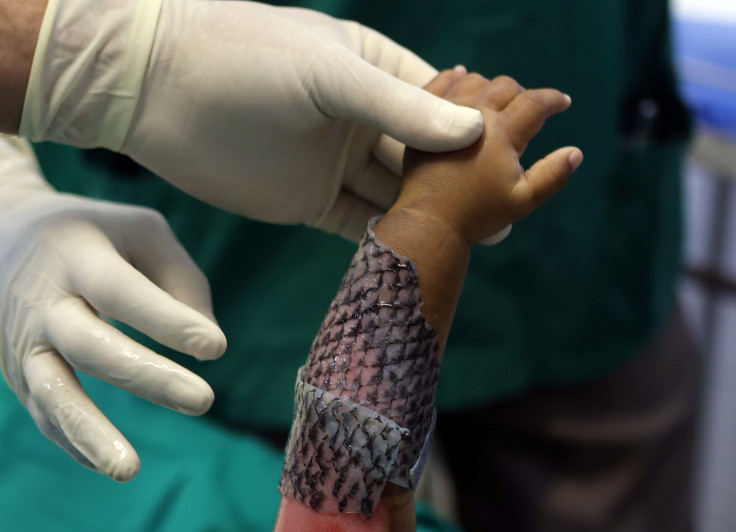Brazilian Doctors Use Tilapia Skin As Bandages For Burn Victims; Fish Skin Speeds Healing

Tilapia is a favorite seafood dish throughout the world, but doctors in Brazil recently discovered a new purpose for this abundant fish. Tilapia skin is now being used a treatment for severe skin burns, as the skin is filled with moisture and collagen to help promote the healing process. Although still in its experimental phase, the process is proving to be cheaper than current burn treatments.
Scientists at Federal University of Ceara in Brazil are using tilapia skin to treat severe skin burns on 56 patients. The fish skin has the moisture, collagen, and disease resistance at levels comparable to human skin and can help speed up the healing process, Fox News reported. In addition to helping with healing, the fish skin also appears to alleviate some of the pain associated with severe burns, Business Insider reported. If proven effective, this treatment could be especially useful in more impoverished areas that do not have ready access to typical burn-healing tools.
Read: The Breakthrough For Burn Victims: One Doctor's 'Skin Cell Gun' Has Been Lying Dormant For Years
“We got a great surprise when we saw that the amount of collagen proteins, types 1 and 3, which are very important for scarring, exist in large quantities in tilapia skin, even more than in human skin and other skins,” Dr. Edmar Maciel, a burn specialist at the institute, told Stat News.
For now, the treatment is still in clinical trials. Although scientists have used tilapia skin to heal burns on animals in the past, this is the first time the method is being used on humans.
The treatment is used on both second- and third-degree burns. A second-degree burn is often characterized by blistering and extremely red and sore skin, Healthline reported. A second-degree burn usually affects the epidermis and the dermis, the two first layers of the skin. Third-degree burns are more severe and cause extreme damage to every layer of the skin. Depending on the severity of the burns, it can take between weeks to months for the burns to heal, but the tilapia skin has been shown to speed up this process.
In most cases, the fish skin is simply left on the patient's burned skin until their own skin begins to scar. However, in cases of more extreme burns, the tilapia skin may need to be changed. However, Business Insider reported that this is less frequent than bandages, and less painful as well according to the patients.
Perhaps one of the most important aspects of this experimental treatment is how little it would cost. At the moment, doctors will often use either pig or human skin to help treat very severe burns. Unfortunately, not all hospitals can afford to give patients these treatments and instead must cover burns with bandages. This slows down the healing process and is especially painful as the bandages must be changed often. Tilapia skin is far less expensive than other burn treatments, costing even less than fabric bandages, Business Insider reported.
See Also:
Fully Functional Skin Grown From Stem Cells Could Double As Skin Graft Replacement, Hair Loss Cure
Old Spice Lawsuit Claims Deodorant Causes Skin Irritation And Chemical Burns



























